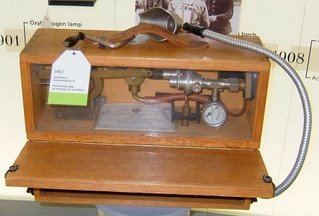


For a century, the giant Crowell-Collier printing plant defined the Springfield skyline, at first heralding the city's prosperity - and then its slow decline.
On May 10, 1999, a general alarm gutted the plant, which occupied a city block on the edge of Springfield's downtown.
Crowell-Collier, publisher of Collier's Magazine, had left town in 1956, and the eight-story building had been used primarily as a warehouse after the company's departure and the loss of 2,275 jobs. The primary occupant at the time of the fire was Dixie Distributing.
The first arriving units at 200 West High Street were Engine 5, Engine 4 and Battalion 1, according to the Springfield Professional Firefighters Association.
The first alarm was received at 10:18 a.m. The weather was sunny. The temperature was 84 degrees Farenheit. Winds were calm.
In its front-page account of the fire, the Springfield News-Sun reported:
Flames worked their way up from the third floor, devouring each subsequent level until bursting through the roof above the eighth floor. ... Windows on the building were blown out by the heat, and glass fell to the sidewalks. Hundreds of small aerosol cans stored inside the building exploded in a constant popping, with occasional louder thuds from larger explosions.
Two firefighters were injured, and several civilians were treated for the effects of smoke and fumes, according to the News-Sun.
Fire crews pounded the flames with an estimated 1 million gallons of water during the eight-hour battle, the newspaper said, noting that the City of Springfield typically uses 12 million gallons of water a day.
In all, 125 city firefighters and 60 township firefighters assisted at the blaze, with the last companies taking up on May 13.
`Good old days'
On its editorial page, the News-Sun said the fire destroyed a part of the city's history.
The Crowell-Collier building, the newspaper said:
... thrived during a time when life was centered in the downtown area. People would walk the streets, stop, shop and dine all the time in the shadow of a building which represented the city's prosperity. It was a place where wages were good and work was steady. ... People in this city still talk about the good old days when the publisher was a major employer.
The closing of the Springfield plant coincided with the company's decision to fold its flagship magazine.
Time Magazine reported on that fateful decision in an article called ``Crowell Colliers Christmas'' in its Dec. 24, 1956 issue.
In addition to closing Colliers Magazine, the company also folded its Woman's Home Companion magazine.
The Ohio Historical Alliance, which is dedicated to historical preservation, published this history of the magazine and the building on its web site:
Founded in New York by David Collier in 1895 as Collier's Weekly Magazine, Collier's was the main challenger to the dominance of the Saturday Evening Post as America's favorite household magazine of the era. The name of the magazine was shortened in the first years of the 20th century when the word “weekly” was dropped from the masthead. In the age before electronic media Collier's was a mix of news, features, tame humor and short stories-- a format that is virtually non-existent today.
The magazine was also recognized for its art work and illustrations. Among the famous who contributed to Collier's was Maxfield Parrish - recognized in the early 20th century as the most popular illustrator of the day.
Colliers and its relationship with Springfield began when the magazine and its interests were acquired by the Crowell Publishing Company.
Their modern facility -- built in 1924 -- had most of the capacity that the magazine would require, although future expansion would be required to accommodate circulation increases.
Manufacturing would remain in Springfield, however the newly formed Crowell Collier moved its editorial offices to New York in order to be closer to the "center" of the publishing industry.
In 1925 the editor of Collier's sent three reporters on a nationwide tour to look at the effects of Prohibition. They found wide spread corruption and graft within law enforcement and as a result, Collier's became the first national publication to call for repeal of the 18th Amendment.
Colliers lost 3,000 readers but overall circulation shot up by an additional 400,000 new readers. Circulation of the magazine declined steadily after 1950 as radio, television and the rise of a new generation of national news weekly’s – including Time, Life and Newsweek – adapted to the changing national tastes.
Compounding Collier's problems was the television industry which provided less expensive advertising then the magazine could afford. While the Saturday Evening Post exists today in monthly format, Collier's Magazine ceased publication on December 16, 1956.





